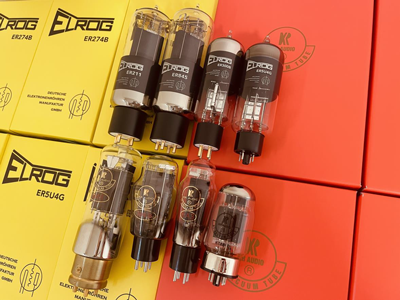What Is a Vacuum Tube?

A vacuum tube, or electron tube, is a hollow device with a highly vacuumed interior and enclosed electrodes. It controls electrons through electric and magnetic fields to amplify, detect, rectify, oscillate, and modulate them.
Vacuum tubes consist of a container made of glass, metal, or ceramics. This container houses multiple electrodes in a vacuum or low-pressure environment, often with a small amount of rare gas or mercury.
The tubes are categorized based on their electrodes: bi-polar, tri-polar, quadrupolar, or pentode. Rectifier tubes, a type of 2-pole tube, are specifically used for rectification.
Uses of Vacuum Tubes
Vacuum tubes were once fundamental in electrical and electronic circuits for rectification, modulation, detection, and amplification. However, semiconductor elements have largely replaced them. Still, they are produced for broadcasting stations, the military, and particularly for audio and guitar amplifiers due to their excellent sound quality.
Special vacuum tubes like magnetrons continue to be important for generating microwaves in microwave ovens and radar.
Advanced applications include X-ray tubes, photomultiplier tubes (PMTs) for optical measurements, and image intensifiers for night vision.
Principle of Vacuum Tubes
Vacuum tubes operate on thermionic emission, where materials emit electrons when heated in a vacuum. In a bipolar vacuum tube, heating the filament emits electrons. Applying a positive potential to the plate attracts these electrons, allowing current to flow.
The triode vacuum tube has a grid between the plate and the filament. Adjusting the grid’s potential controls the electron flow, enabling amplification.
Quadrupole, pentode, and beam tubes are evolved versions of the triode, offering enhanced performance.
Types of Vacuum Tubes
Vacuum tubes come in various types, each suited for specific purposes.
1. Audio and Guitar Vacuum Tubes
Primarily used in amplifiers for enhancing music and instrumental signals.
2. Transmitter Tubes
Crucial in transmitters for radio communication, broadcasting, and industrial high-frequency generators.
3. Cathode Ray Tubes (CRT)
Integral in devices like cathode-ray tubes for image display.
4. Magnetron
Key in microwave generation for radar and microwave ovens.
5. Imaging Tubes
Formerly used in TV cameras, now prevalent in nuclear reactor decommissioning due to radiation resistance.
6. Night Vision Tubes (Image Intensifiers)
Utilized in night vision devices and goggles.
7. X-ray Tubes
Employed in dental and industrial X-ray inspection tools.